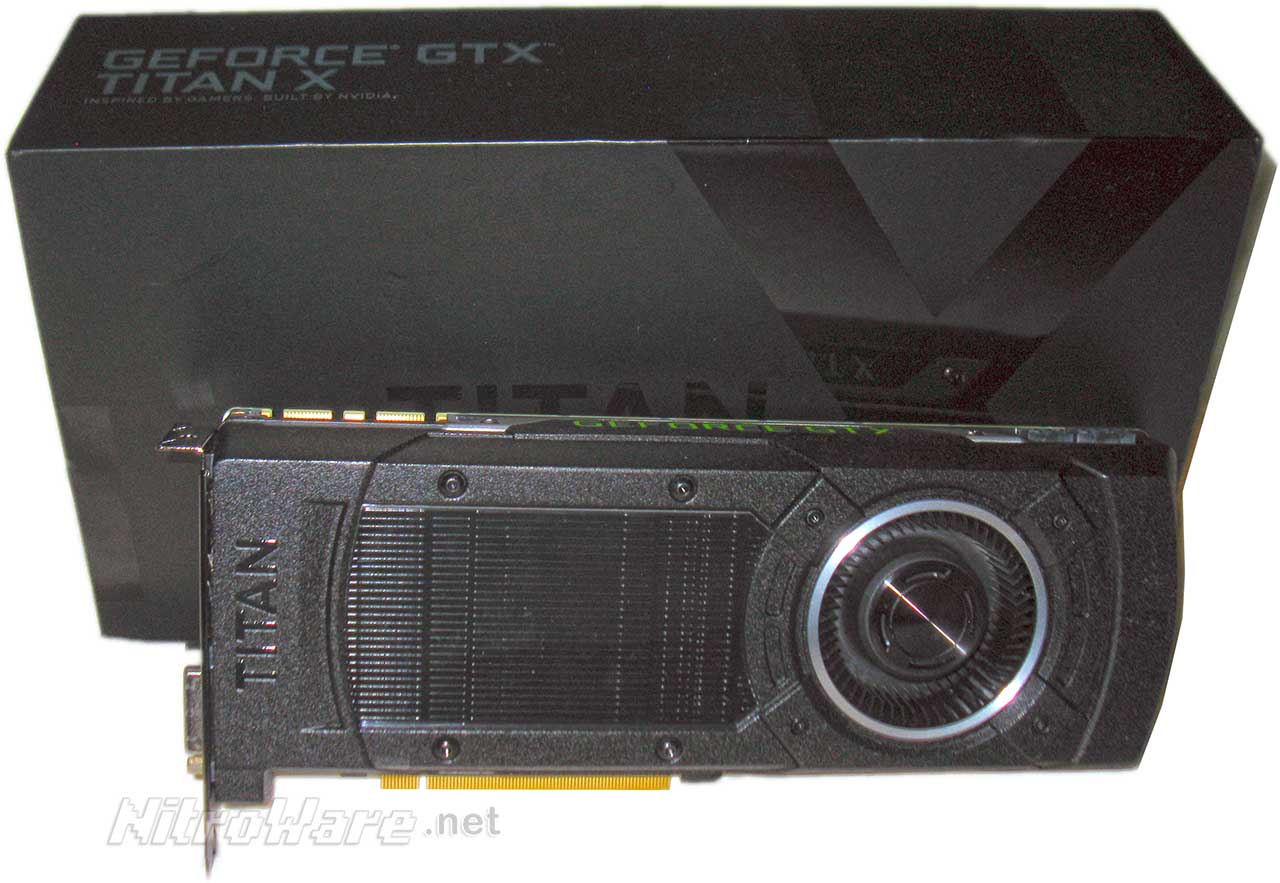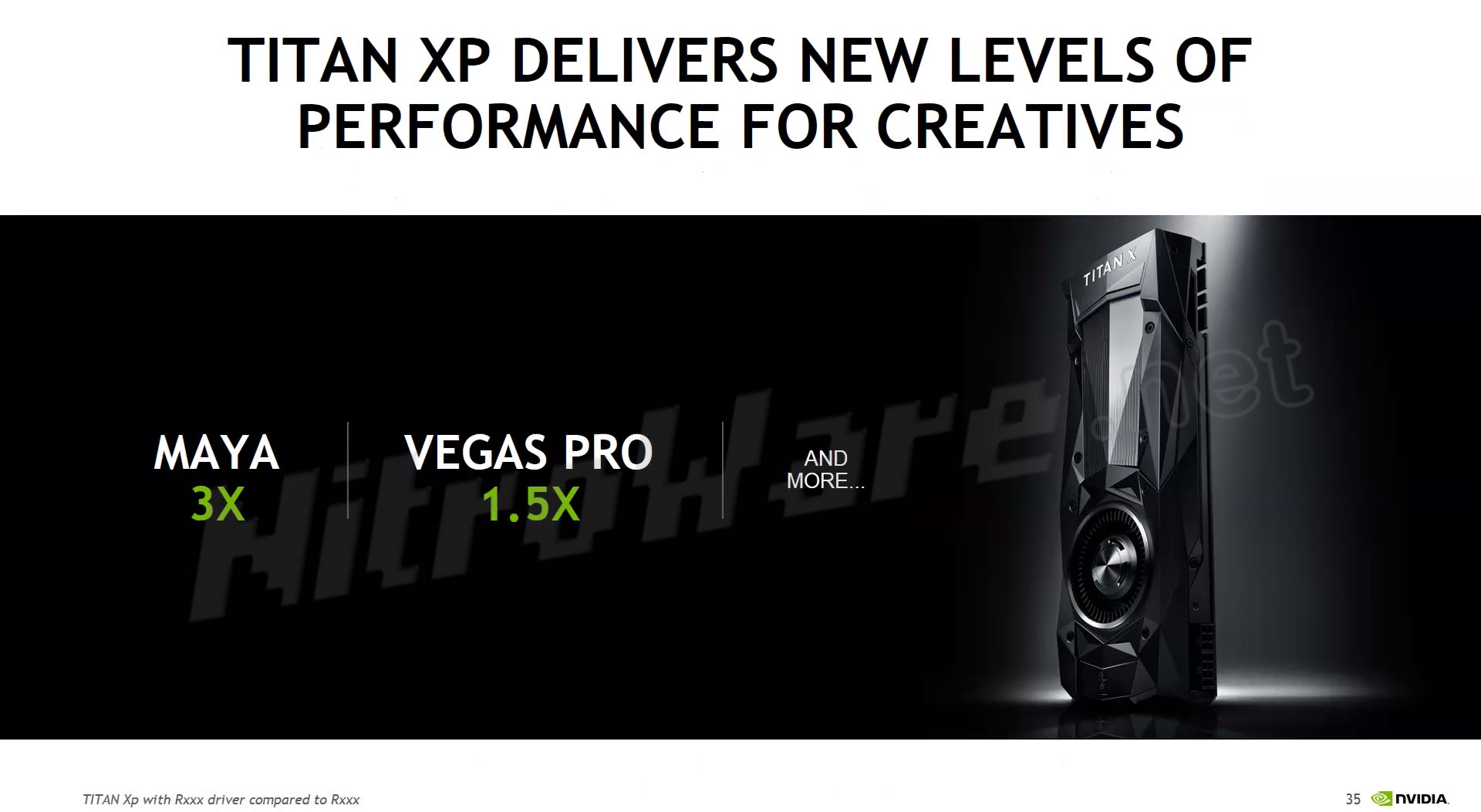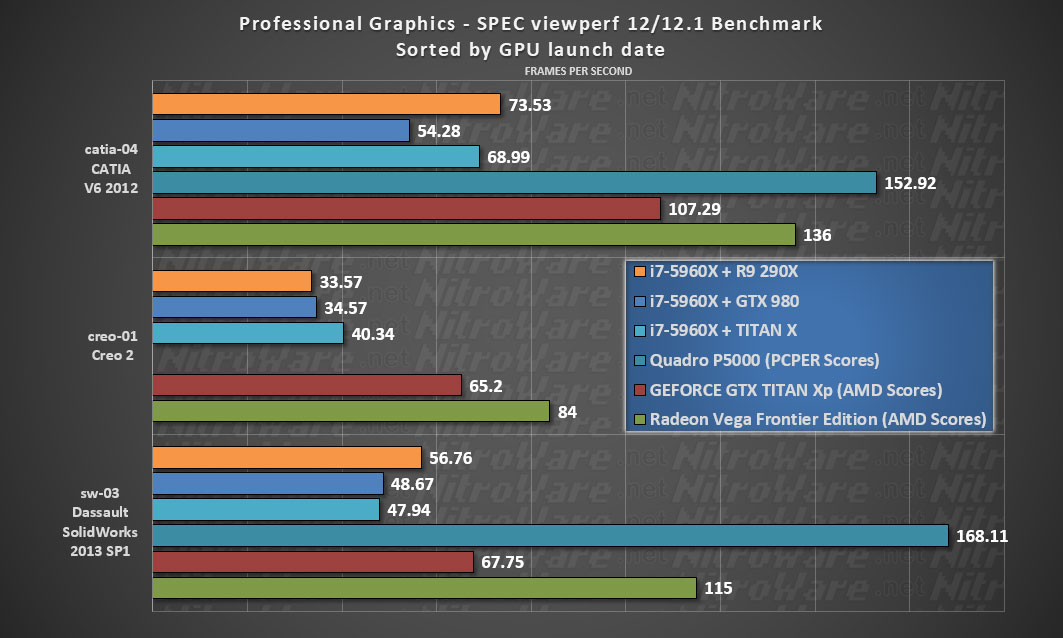SIGGRAPH 2017: NVIDIA powers content creators.
In conjunction with their new “bringing AI to graphics” initiative which is tied to the introduction of their new AI optimised Volta based Tesla V100 GPUs, NVIDIA will deliver a new driver to bring Quadro like speed-ups for pro apps like Maya and Vegas targeted towards TITAN X and derived graphics cards.
With AMD recently clearly segmenting its graphic card line into gaming/enthusiast (Radeon RX), semi-professional (Radeon PRO) and HPC (Radeon Instinct) and eliminating the previous professional rendering FirePro brand line from the line-up, this has left NVIDIA and specifically its TITAN Sub brand in a dilemma. The industry has been waiting for NVIDIA to react and rectify the situation and as of SIGGRAPH 2017 conference, the GPU vendor apparently has, though future testing will confirm.
As enthusiasts may already know, the original ‘Kepler’ Based TITAN boards offered hardware support for dual precision (64-bit) floating point calculations, as well their native higher performance via clocks, memory bandwidth and total memory capacity. As additional TITAN models were released on newer generation GPUs such as Maxwell and Pascal, these hardware benefits were mainly lost leaving only clocks and memory size.
Releases of Ti (Titanium) edition GEFORCE cards such as 980 Ti and 1080 Ti typically challenged the existence of these TITAN boards, not to mention the branding cluster-f* the last few TITAN boards have had (TITAN X, TITAN XP but not really a p and finally TITAN Xp...)
NVIDIA has always carefully tried to keep the GEFORCE/TITAN line-up separate to QUADRO against some market forces, constantly insisting their more expensive, highly profitable and exclusive to purchase TITAN boards are meant for individuals who wish to do ‘deep learning’ and not gaming only. But again, these only offer the standard GEFORCE hardware feature set, the small minority who needed double precision could not use the TITAN boards.
Additionally, some display options such as 10-bit colour output, despite originally only supported on QUADRO were cascaded down to GEFORCE, and since Pascal, we have the new Half Precision 16-Bit Floating Point calculations support for specific AI loads which don’t need higher resolution.
Anyway, AMD’s introduction of a semi-professional tier of boards through their Radeon Pro, Duo (both on Polaris architecture) and Frontier Edition (Vega) boards offered the end user a choice of professional drivers and software plugins such as AMD's own accelerated “ProRender” for MAYA plugin.
AMD also endorsed benchmarks for these boards that emphasised professional and content creation apps, such as those measured using the SPECViewperf set of industry benchmarks including CATIA, MAYA, Solid works, Dassault and other packages. Rounding off the set is the more commonly used Premiere Pro, Vegas, Blender and Cinema4D renderers
In virtual response to AMD’s direction, we have been advised by NVIDIA that they will have a driver available at the end of this week to accelerate MAYA and VEGAS Pro ‘among others’ specifically targeted to the TITAN Xp flagship Pascal based card.

When NitroWare enquired with NVIDIA as if this content creation driver would be hard locked to TITAN Xp we were advised that no it would not be and GEFORCE may see a lower speed up, but the focus of the driver and it’s advertised speedups would be for TITAN X and Xp.
It was not confirmed to us whether the driver is specific to Pascal GPUs or it will support Maxwell also, given the original TITAN X was Maxwell.
1080 and 1080 Ti should see good speedups with content creation, there is no technical reason why they would not unless the nature of the driver has been miscommunicated to us.

Any other performance benefits and supported pro software was not advised at press time and will be released when the driver goes live later this or next week.
This driver is a great bonus for existing TITAN users who specifically purchased the board for more than gaming purposes as well as an incentive for potential purchases.
It also puts a dent into AMD’s VEGA Frontier Edition efforts. This driver should not serve as to cannibalise Quadro boards as they serve a slightly different market. They often have additional/different display outputs as well as ISV certification. Though some vendors such as Adobe and MAGIX (who purchased VEGAS from SONY) do support consumer cards now for OpenCL and CUDA acceleration. Just giving its prosumer users a boost in widely used Premiere Pro and Vegas alone, which are used by many vloggers, beginner and professional video producers alike is a nice bonus, let alone any speedups for those who do 3D rendering.
I applaud NVIDIA for doing the right thing by its users and taking an unconventional direction (by its own history). Of course, there will be some enthusiasts out there who will scream that this is just proof that the GEFORCE line was software crippled this whole time, well frankly I don’t give a damm. This was no secret and NVIDIA would admit this in certain terms.
Unless NVIDIA has already given this upcoming driver a name, what do we call it? We already have had Detonator (remember those?) then ForceWare and now Game-Ready. I call dibs on TITANIC drivers, though there is that slight sinking problem…
We will endeavour to deliver you benchmarks of the new driver focused on the GTX 1080 as we no longer have a TITAN board. I predict it will work just fine.